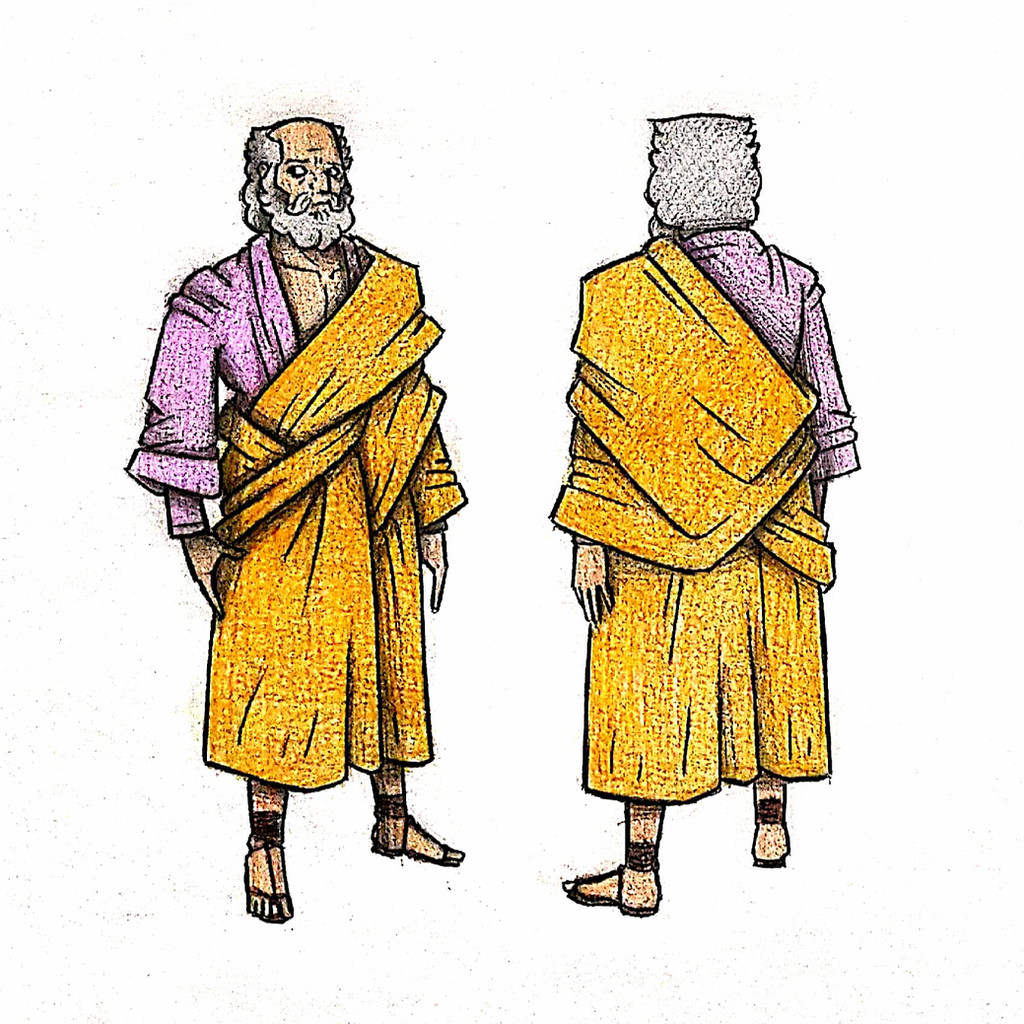HOME | DD
 Avapithecus — Anaximander
Avapithecus — Anaximander

#anaximander #apeiron #character #design #greek #history #philosopher #referencesheet #miletus
Published: 2023-05-30 12:21:44 +0000 UTC; Views: 2771; Favourites: 25; Downloads: 0
Redirect to original
Description
Anaximander was a pre-Socratic philosopher born in the Greek city-state of Miletus around 610 BCE. Not much survives of his biography or ideas, as all his books have since been lost to time. We know he studied in Miletus under his tutor, the equally famous Thales, but he was also known to be a traveler. He is said to have visited Sparta, where he would introduce the gnomon sundial, and to have founded a colony called Apollonia on the coast of the Black Sea. He is also said to have had a solemn disposition, and dressed in pompous garments, so I guess he was a bit of a dickhead, but that's philosophers for you. And what was his philosophy, you may ask? Well, he had a few ideas which later writers have squeezed through the cracks of history for us. For one, he held a sort of proto-theory of evolution, in that he believed all life emerged from primitive droplets of water, and that humans arose from fish. I mean he's not technically wrong, but you're missing some steps there, buddy. He was also a flat-earther, sigh, though I guess to be fair this wasn't an uncommon belief at the time. He believed Earth was a flat disk situated on a cylindrical sky, and that the sun and moon were actually rings with only the little circles as windows to the fire inside. This is also why he thought the phases of the moon were caused by the vents closing and reopening. Why are there vents in the sky? Who's opening them and why? Hell if I know, I chose to blame Celestia.The Milesian School of which Anaximander was a student was primarily focused on debating the structure and origins of reality, no biggie. The scholars of the school ultimately came to decide that all matter must derive from some primordial element which can mutate into all other forms, but they couldn't agree on which of the four classical elements that was. Thales believed it to be water, while others argued for fire and air and earth. Anaximander, however, proposed something outside of the box. He realized that each element came with the problem of infinite regress. In English, we often use the phrase "turtles all the way down", a reference to the mythology of many Indigenous Americans who see the world as being carried on the back of a giant turtle. The question arises, of course, are we to believe that turtle is standing on the back of another turtle? And another? And so forth? If reality was to have started with one of the four elements, then what made that first element? Anaximander thus threw this idea out in exchange for something new: a sort of parallel dimension of pure possibility which he called the "Apeiron", which means "the Boundless". He believed that creation sprang from this strange realm of entropy, and would so return upon destruction. It doesn't quite eliminate the infinite regress problem, but then again infinity is still causing problems for our cosmologies even today, so I can't fault him for that.
Design notes, not a lot of art of Anaximander out there. There's like two ancient depictions of the man. One is a carved relief found in Rome from the 2nd century BCE, and I used that as my primary reference for his face and beard. The other is a 3rd century CE mosaic from Germany, which I used to design the rest of his hair/lack thereof. His robes were taken from a painting of him teaching the Spartans how his gnomon works, which I swear isn't a euphemism, but I couldn't find the original source for this damned piece. It certainly looks old, but it only seems to appear on one website, which inconveniently does not have a bibliography. Ah well, if I find it I'll come back and update it. The color scheme is ripped straight from Raphael's famous piece, The School of Athens, simple enough. Anaximander appeared as a supporting character in my D&D game, although in spiritual form since he died in 546 BCE, twenty years before the campaign was set. His "Apeiron" is what I've turned into the central mechanism of the Drake Hero Universe, so his tomes and scrolls were the most valuable items the party and the villains could possess. The Apeiron in the Drake Hero Universe is how supernatural beings come into exist when people believe in them, and where they disappear to when they are forgotten. It's a nightmarish landscape of Escher-esk landscapes and eye-straining magenta. Anaximander is one of the few individuals in history who has dared try to explore and understand this realm… and brave the mind-warping challenges within. It is a realm of great secrets and sacred knowledge, but also terrifying monsters and Lovecraftian banshees. His maps are the only hope a traveler would have of making their way in and out alive…
Related content
Comments: 2

👍: 1 ⏩: 1

👍: 1 ⏩: 0






















